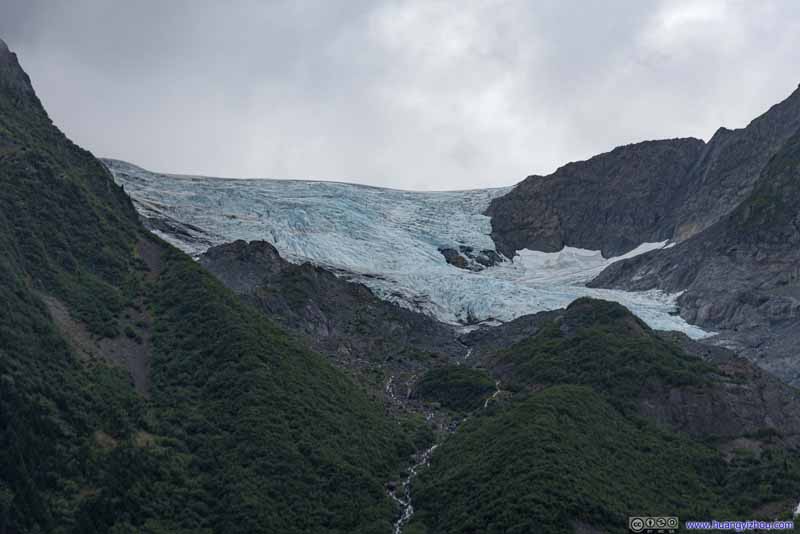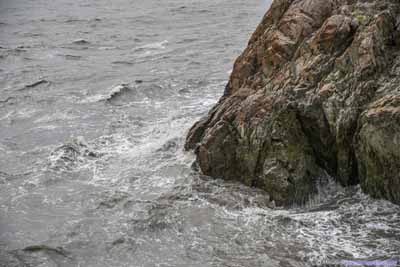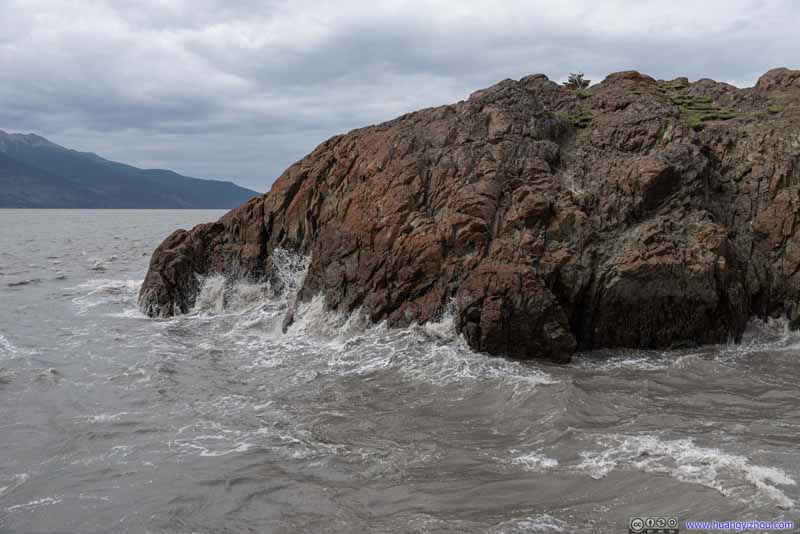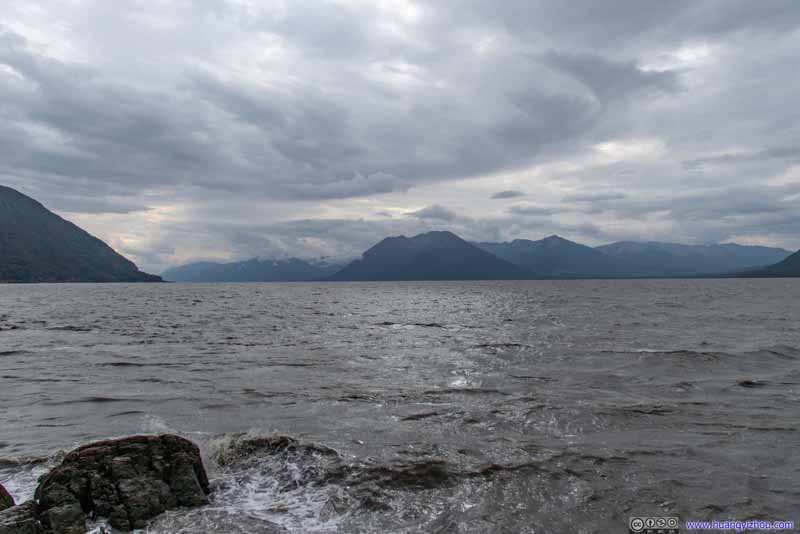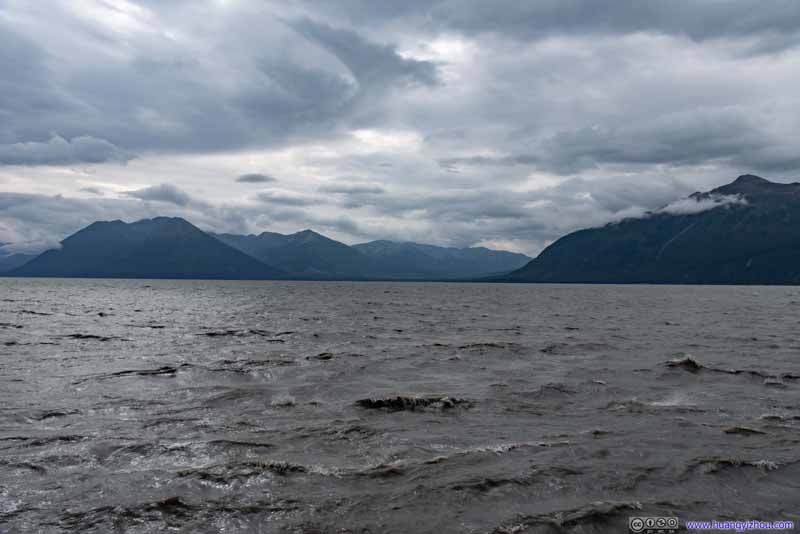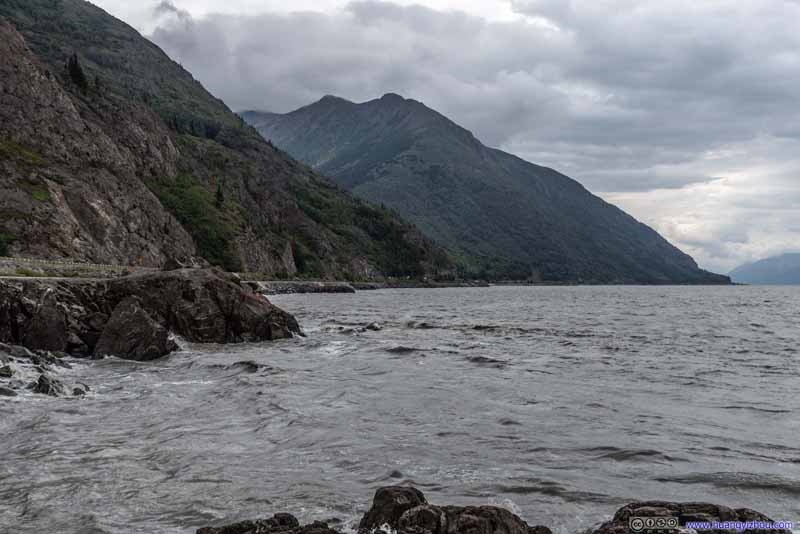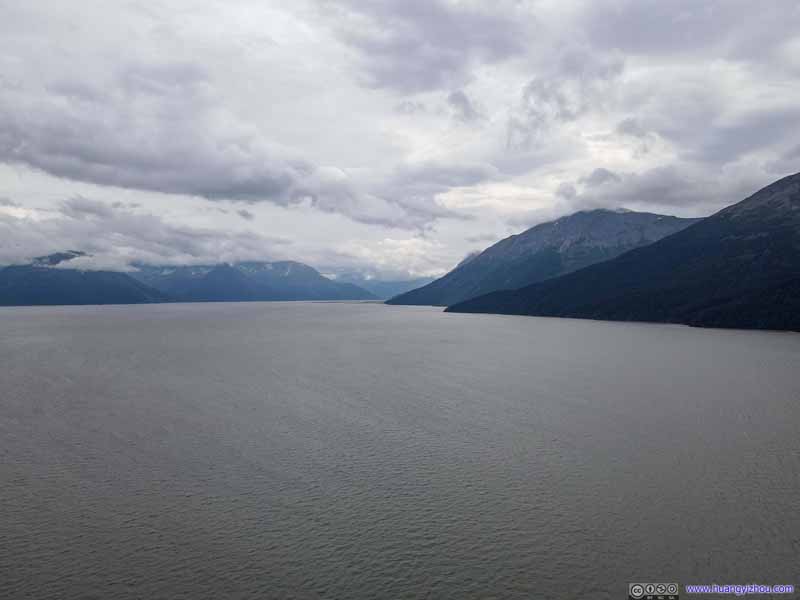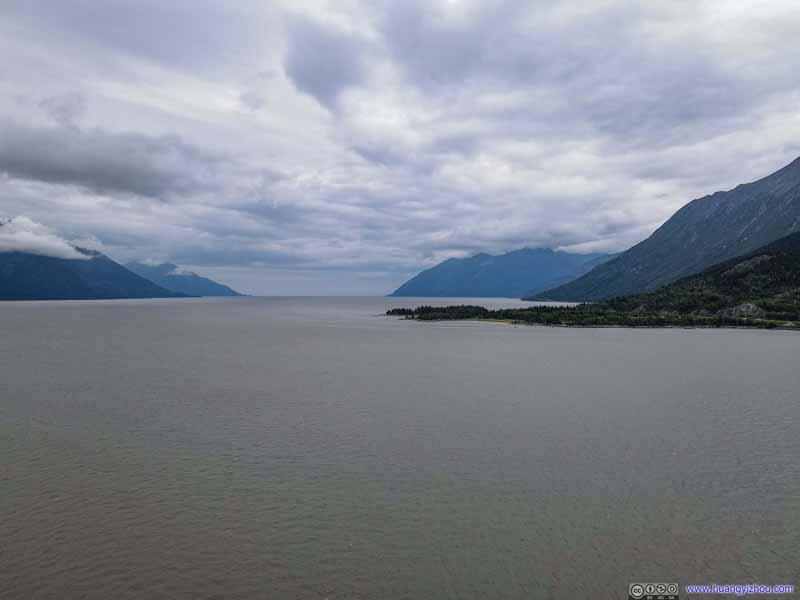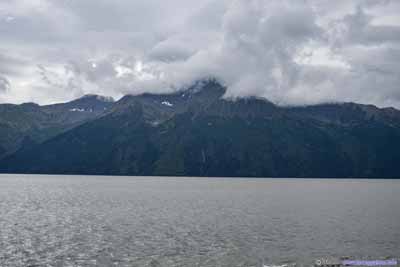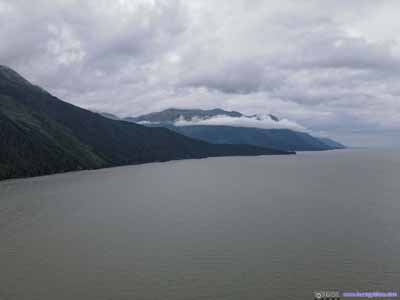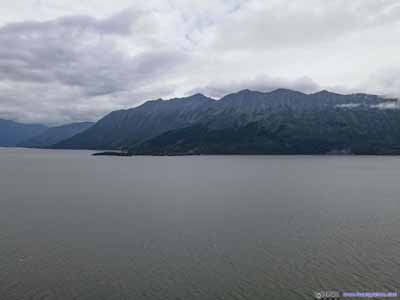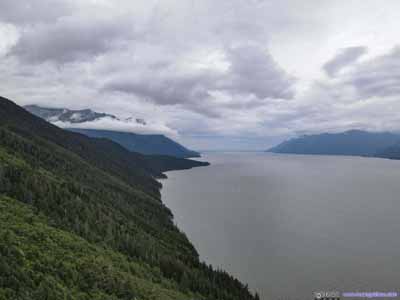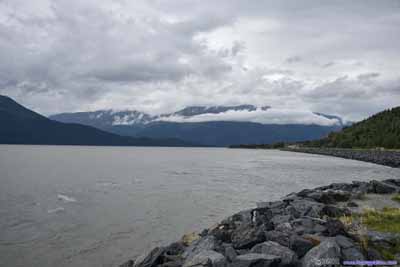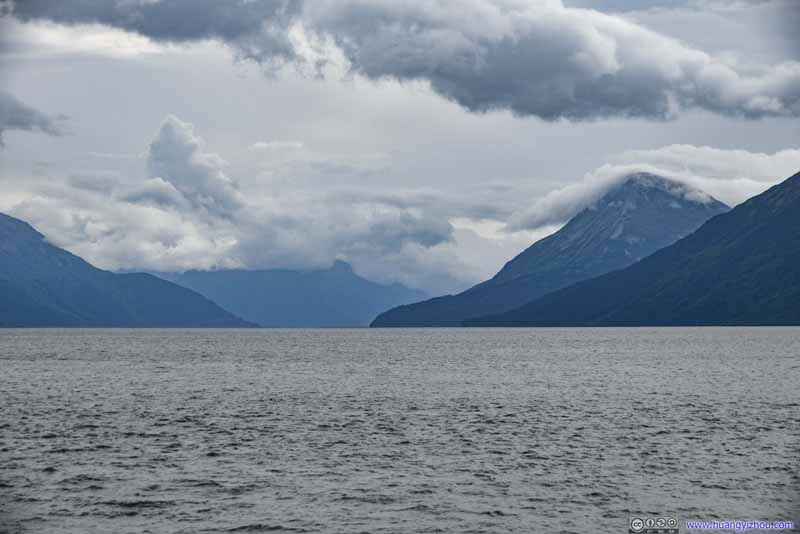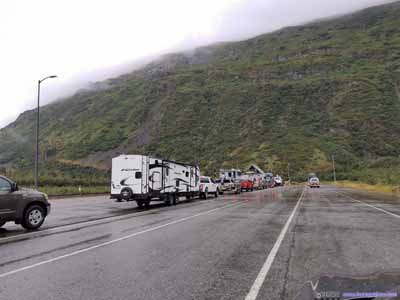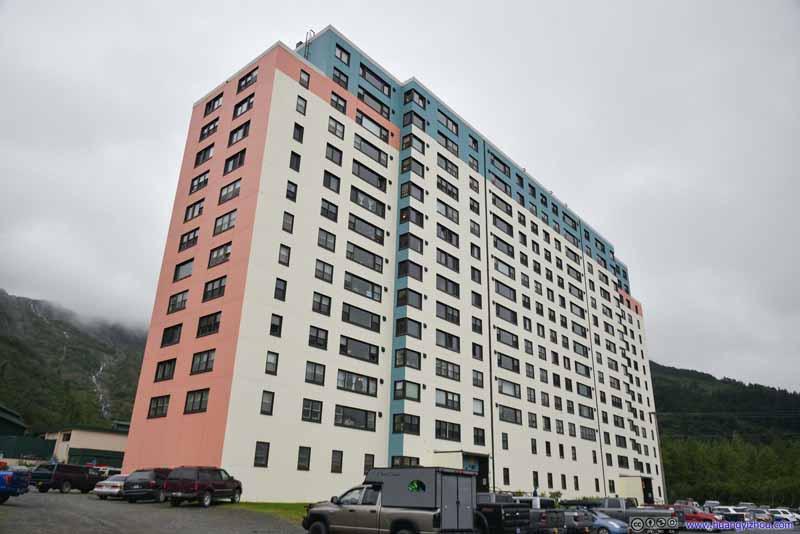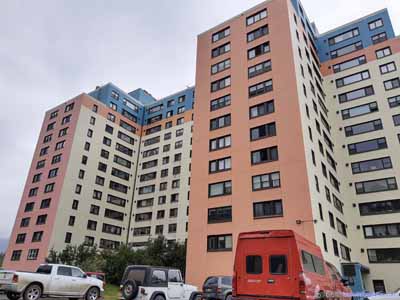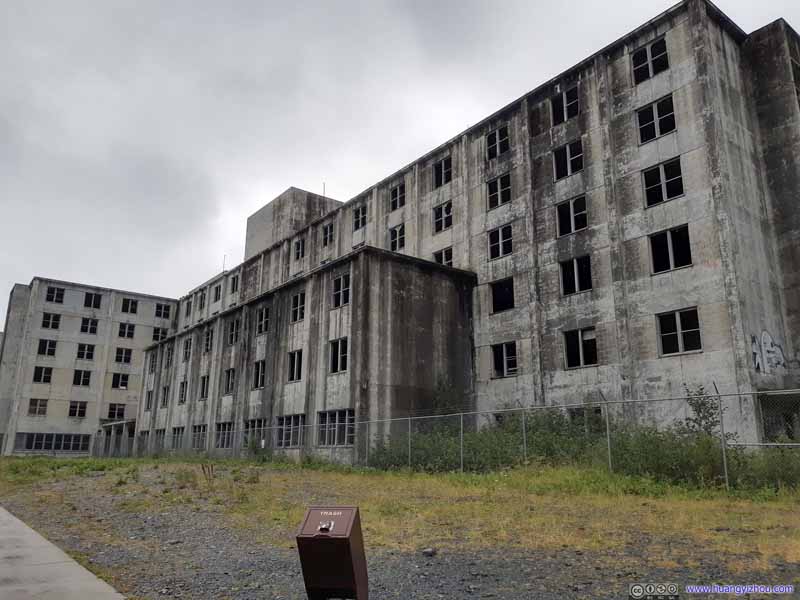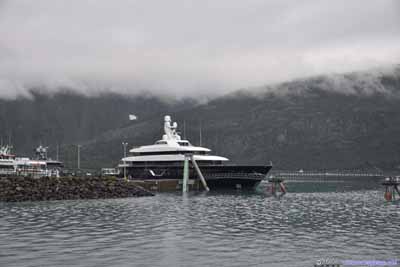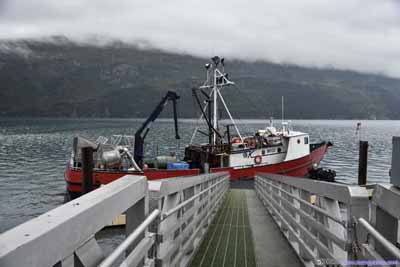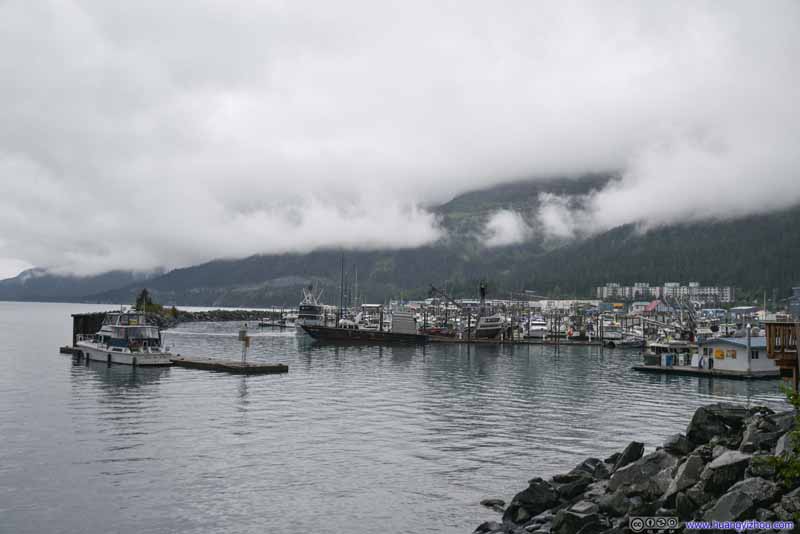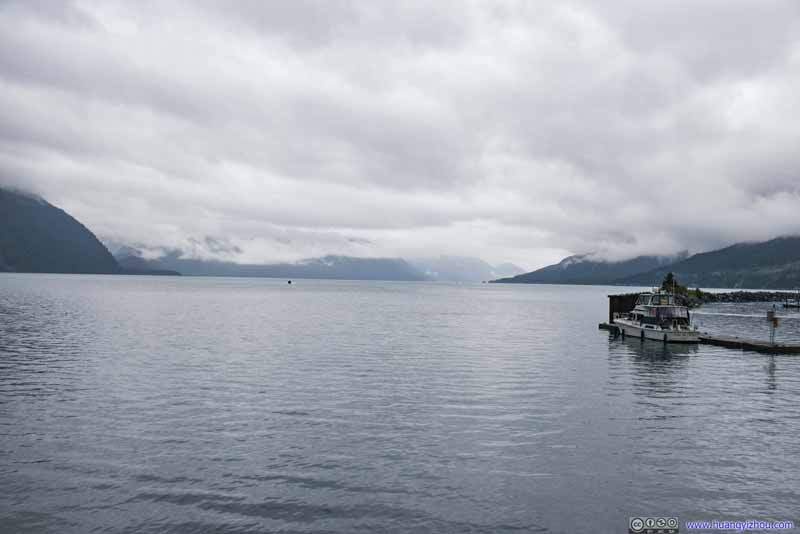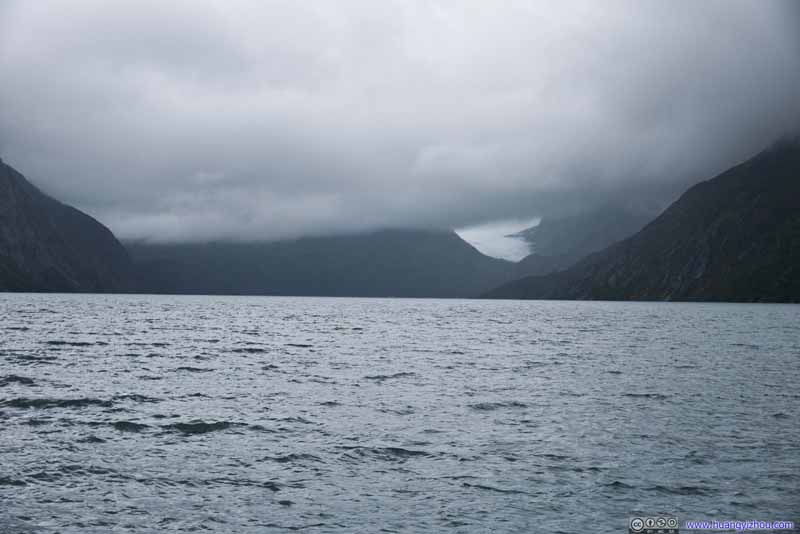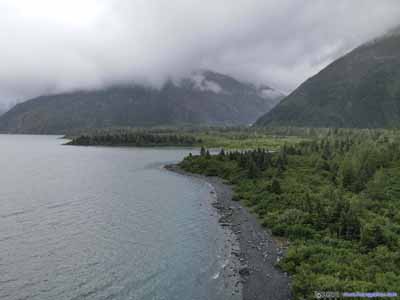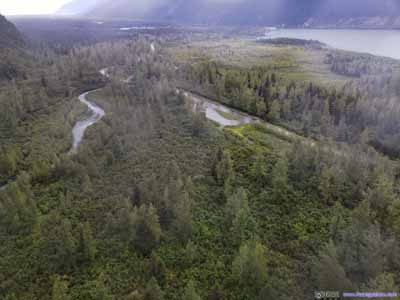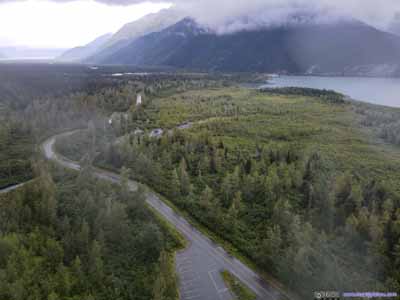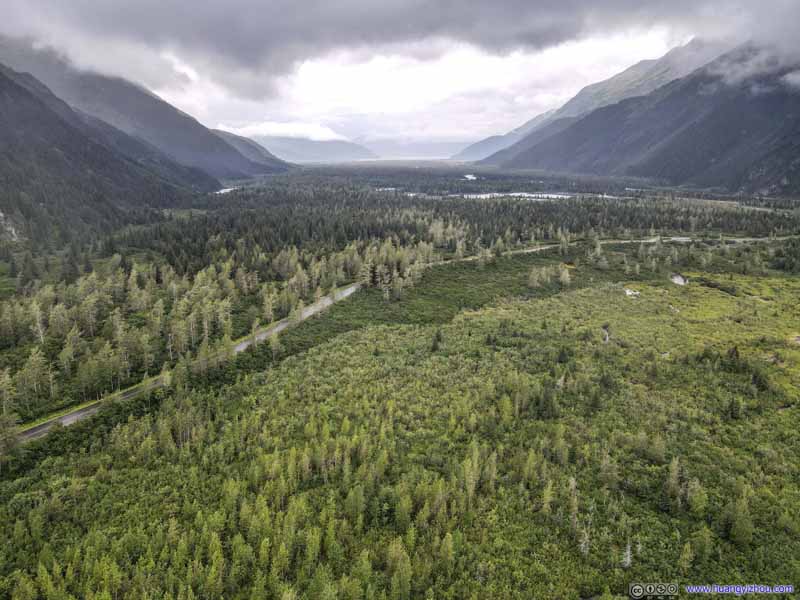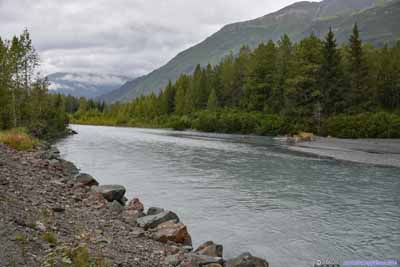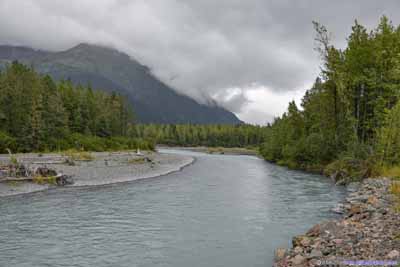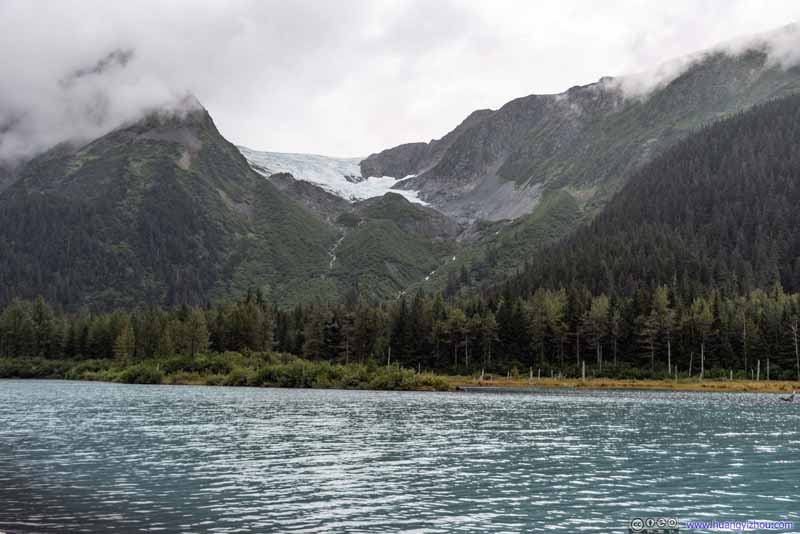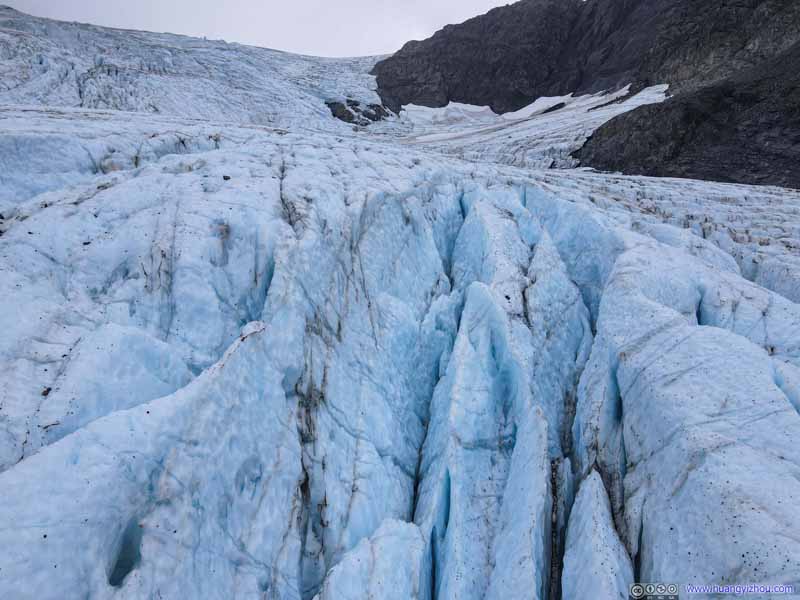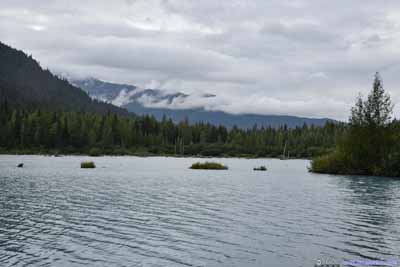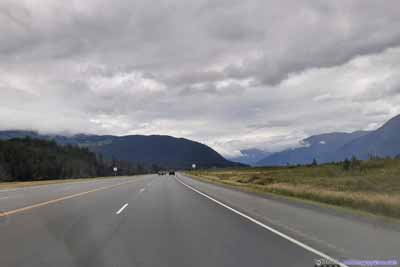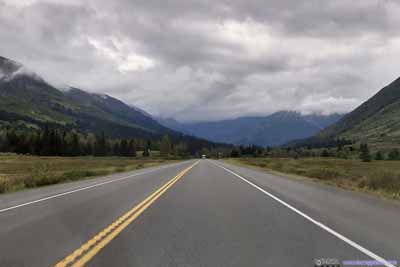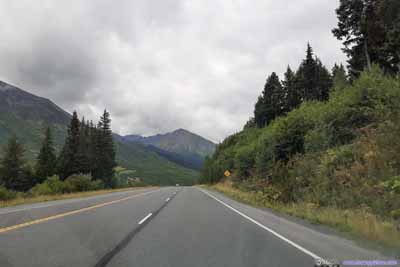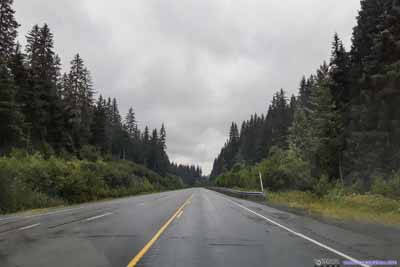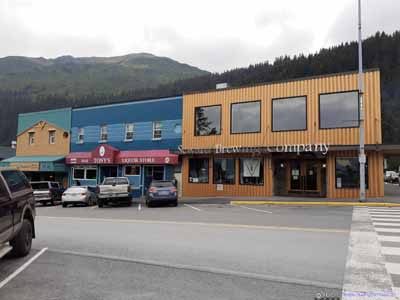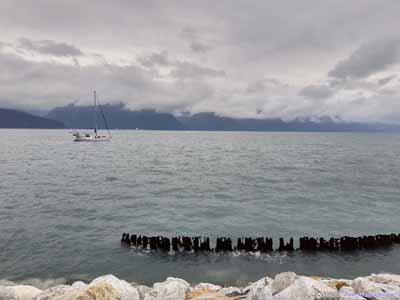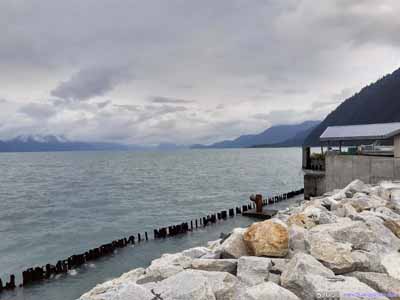Updated on January 31, 2021
Day 1 of 2020 Alaska Trip, Drivig to Seward
First day of our Alaska trip. We would be driving from Anchorage to Seward today. The 2.5-hour journey would pass through some beautiful landscapes, like Turnagain Arm and Chugach National Forest. In addition, we would take a detour to visit the town of Whittier, a town only accessible on land through a single-lane cold war tunnel.
After yesterday’s exhausting full-day flying, when we set off for airport early and reached hotel late, in addition to 4 hours of time difference, we set off reasonably late this morning. After a trip to the downtown car rental store and moving all our luggage into the car, it’s almost 11am by the time we left our overnight hotel.
Not long after leaving Anchorage, we reached Turnagain Arm, which was a narrow waterway on the northern end of Cook Inlet. Alaska Route 1 ran next to it for quite some distance, with scenic views as the narrow two-lane road wound its way between soaring mountains and crashing waves.
Beluga Point
Along the way there were a few roadside turnouts for picture-lovers, Beluga Point was one of the bigger ones.
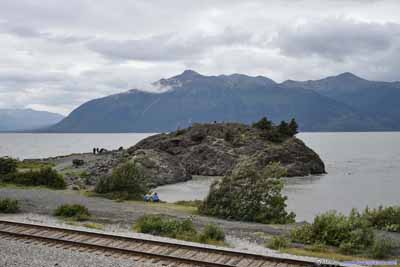
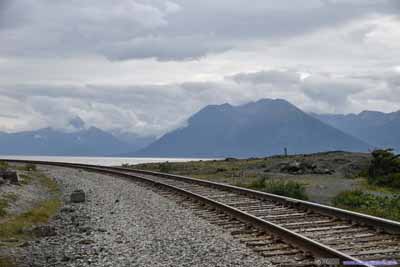
Turnout along AK1
I planned the next stop to be Bird Point, a bastion into Turnagain Arm. Unfortunately, I missed the exit, so we stopped at the next roadside turnout instead.
This time, I set off my drone across Turnagain Arm.
And here’s my drone’s video on its return.
Whittier
The town of Whittier was American military’s gateway into Alaska during World War II (they probably thought Cook Inlet was too much a detour than Prince William Sound). Separate from the outside world by Maynard Mountain, the army built a 4100m railway tunnel through it.
The town’s probably most famous for its Begich Towers, which was built in 1957 for army personnel. In addition to residential units, the building contained all basic services of a town: post office, general store, police department, church, and even a hotel, thus given Whittier the nickname “town under one roof”. Perhaps that’s true in winter’s brutal weather, but during our visit, the other parts of the town was certainly alive and kicking.
The tunnel to Whittier was the only part of our journey where we had to pay toll. Coincidentally, it’s the only place where we encountered some annoying flies/bugs. The one-lane tunnel operated on a published schedule, with traffic direction alternating every half hour (time your arrival wisely). The lady at the toll booth stressed repeatedly about follow distance and speed limit since it’s a one-lane tunnel with uneven surfaces.
Approaching the town of Whittier, the soaring Begich Towers were hard to miss. In a normal year, I’d love to take a tour of this roof that housed an entire town. Unfortunately, a few residents of Begich Towers had tested positive for COVID, (and half the tower fled as a rumor) so the building closed its doors for visitors. Instead, we took a quick walk around it.

Moose
Our next stop of the day was Buckner Building, the other main structure in town. Constructed by the military in 1953 (4 years earlier than Begich Towers), it also followed the model of “town under one roof” with movie theater, bowling alley, hospital and radio/TV station in the building in addition to residential units.
After the military pulled out, Buckner Building gradually fell into disrepair. Right now, the perimeter fence around the building kept out all visitors by day and ghosthunters by night.
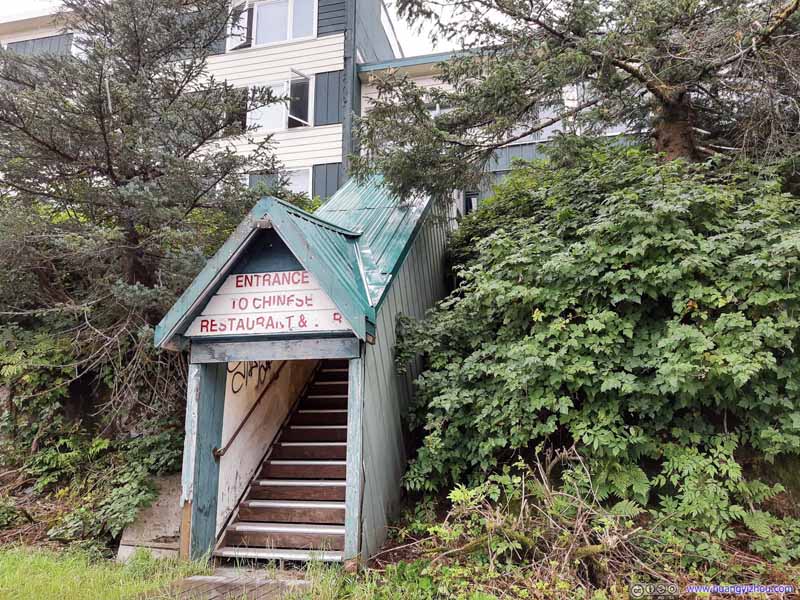
Tunnel to Chinese Restaurant
Before the tunnel to outside world reopened, we spent some time at Prince William Sound Museum (closed, only a few exhibits along a public corridor), and the town’s waterfront.
Official census of the town’s 200-ish population seemed out of line with the huge number of boats in its harbor. After learning the fact that the tunnel wasn’t open to vehicular traffic until 2000, before which it was railway only, this came less of a shock as boats were like a lifeline here.
Portage Lake
After the tunnel from Whittier, we regained control of our driving pace from its schedule. We made a stop by Portage Lake, “Begich Boggs Visitor Center” to be exact.
The lake and nearby glacier was named because it’s on portage route between Prince William Sound and Turnagain Arm. Right after the tunnel into Whittier there’s the trailhead of Portage Pass Trail, following which one could reach the other end of Portage Lake with views of Portage Glacier, the largest in its vicinity. We were not in the mood of hiking today, so we chose the easy option of driving to its other end, before the tunnel.
From visitor center, I launched my drone for an aerial tour of the lake. Despite that my drone should have the range to cross the entire span of Portage Lake to its other end, with views of Portage Glacier, I instead mistakenly aimed for the closer Byron Glacier (photo’d above). Even worse, clouds were getting lower and thicker after I launched my drone, so Byron Glacier turned out to be out of my drone’s reach.
And here’s my drone’s video:
Explorer Glacier
Despite the setback, my wish of touring glaciers with drone quickly came to realization no far down the road, with Explorer Glacier.
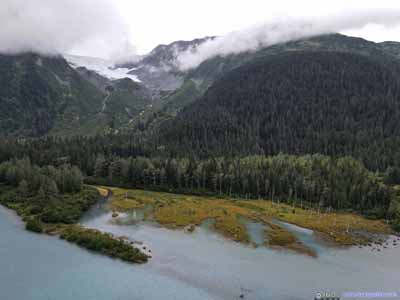
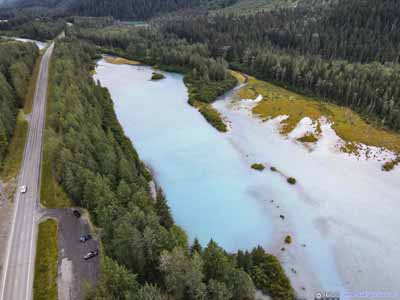 LakeA short stroll from this roadside turnout where Explorer Glacier was situated across the lake. All vivid colors of nature were present here.
LakeA short stroll from this roadside turnout where Explorer Glacier was situated across the lake. All vivid colors of nature were present here.
Here’s a video of my drone approaching the glacier surface.
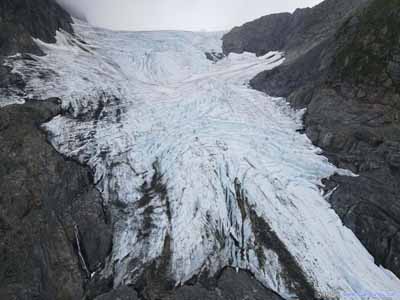

Overlooking ValleyPortage creek wound its way to Turnagain Arm, with snow-crested mountain on both sides of the valley.
After that, we headed straight towards Seward with little delay. The country road to Seward passed through some dense forests with nice views. Unfortunately, portions of the road was under construction, it’s one of those moments when one wonder whether the small rental sedan would withstand it unscratched.
Our overnight Airbnb was located out of town along Exit Glacier Road. Unfortunately, I missed its exit (second time of the day). So, we decided to take a quick look of downtown Seward first.

After that, we stocked up at Safeway, the only large grocer in town, and checked into our Airbnb cottage.
END
![]() Day 1 of 2020 Alaska Trip, Drivig to Seward by Huang's Site is licensed under a Creative Commons Attribution-NonCommercial-ShareAlike 4.0 International License.
Day 1 of 2020 Alaska Trip, Drivig to Seward by Huang's Site is licensed under a Creative Commons Attribution-NonCommercial-ShareAlike 4.0 International License.

